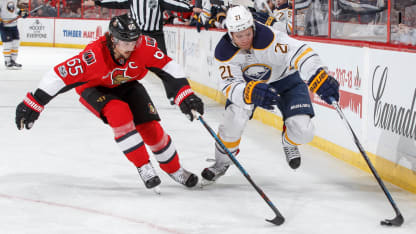Erik Karlsson's offensive value to the Ottawa Senators is well-established. There is a common perception that he is weak defensively, but it's one that can't be backed up with numbers. Karlsson plays big minutes, blocks a lot of shots and takes a regular shift killing penalties, and opponents don't get a lot of shots when he's on the ice.
Over the past three seasons, Karlsson averaged 21:58 minutes per game at even strength, third in the NHL behind Ryan Suter of the Minnesota Wild (22:38) and Drew Doughty of the Los Angeles Kings (22:04). No defenseman gets anywhere near as much even-strength ice time as Karlsson without a reputation for strong, two-way play. Karlsson also averaged 1:19 minutes per game killing penalties, despite the value in saving his time and energy for the power play.
Karlsson blocked 465 shots in 241 games the past three seasons, 10th-most in the League. Despite Karlsson typically playing against opponents' top players, Ottawa's 54.06 shot attempts allowed per 60 minutes with him on the ice was third-best among the 11 Senators defensemen who played at least 300 minutes at 5-on-5 the past three seasons.
Karlsson may not be elite defensively, but the numbers suggest that he is far from being a liability.

